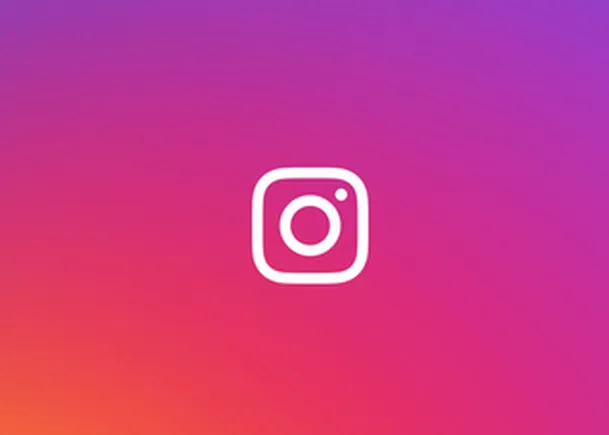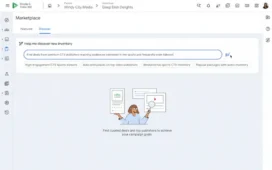What are the key factors driving post reach on Instagram? Do you need to post Shorts to gain any traction in the app? What’s Instagram’s current focus in amplifying certain types of posts and creators in the app?
Instagram chief Adam Mosseri has provided insight into each of these elements in a new interview with Colin and Samir, which could provide more direction for your IG strategy, and how you approach the platform moving forward.
You can check out the full 90-minute interview here, but in this post, we’ll take a look at some of the key notes.
First off, Mosseri notes the significance of video in the app, and how video has had a transformative impact on content engagement.
As per Mosseri:
“More than half the amount of time spent on Instagram is video at this point in most countries. It’s not the only thing we do, we try to do it differently than YouTube and TikTok, where I think it’s a bit more of a laid-back, passive experience. We try to create a bit more of a participatory, lean-in experience, one where you’re going to discover a Reel and then send it to a friend, and then talk about it with another friend. But it’s still a huge part of what we do, because there’s a huge amount of demand, and at the end of the day we’re a business, and we have to figure out a way to meet demand as demand moves around and shifts.”
That comes as no surprise. Meta’s been talking up the value of video content in its apps for years, and Instagram has clearly made a shift away from its still image roots, and towards video content. But it is interesting to note that Instagram is still trying to emphasize sharing behaviors, even as it leans more into video consumption, which is increasingly powered by its AI-based recommendations.
Which is a shift led by TikTok, in that TikTok has moved away from your following graph, and towards the content itself. That’s opened up new opportunities for social platforms to show people a broader range of content, via systematic “For You” feeds, guided by your in-app behaviors.
But it is interesting to hear how Mosseri talks up this element:
“There’s way more unconnected content [profiles you don’t follow] than there is connected content. So you maybe follow, I don’t know, a few hundred accounts, maybe a few thousand, [and] most of them don’t post something to feed in a given day. So let’s say there’s 100 or 200 things you could see in a given day. There are hundreds of millions of pieces of content posted today that are from accounts you don’t follow, and a few of those might be really exciting for you.”
The fascinating consideration here is that Meta has spent years telling us that we follow too many accounts. That’s been the justification for its controversial News Feed algorithm, because users simply follow too many profiles and Pages, so we can’t possibly see all of the updates assigned to us based on our following graph. As such, Meta’s been telling us that we need a feed algorithm to rank them, but now, Mosseri is saying, essentially, that people don’t follow enough profiles, or the right ones. So it needs to now show us more stuff.
Given this, in theory at least, the core concept of the News Feed algorithm is dead, right? Maybe that’s because people are now posting less, so there’s less stuff in your queue each day, but the old justification is now, seemingly, gone.
So we should have a chronological feed back. Right?
I mean, Meta’s drawing a heap more engagement from its recommendations, and that’s likely enough to justify it maintaining its new “For You” style approach. But it’s an interesting consideration in the broader calculus here.
Mosseri also talked about how the algorithm currently ranks content, and what the most important factors are that define post reach.
The key consideration these days? Sends:
“One of the most important things to look at if you’re trying to evaluate how your videos, or anything is doing on Instagram, is definitely the sends. I would look at sends per reach. So of the people who saw it, how many of them sent it to a friend? Because that tends to be the content that does the best, because it tends to drive the most value for the overall community.”
Sends, Mosseri says, is now more in line with how people use the app, which is geared around private engagement.
“If you saw some amazing basil planting video, maybe some sort of time lapse right, and you sent that to [a friend], that’s an interesting moment, because you discovered something that someone made, something creative, something beautiful, something interesting, and then you shared it with a friend. And then he’s psyched to get it, and then you might actually have a conversation about gardening basil or whatever you like, but then he came back to Instagram, and he actually probably checked out some more things. Maybe he then saw an amazing soccer highlight, and then he sent that to me, and that’s the flywheel, where you’re discovering something, then you send it to a friend, you start a conversation, then that helps them discover more things themselves.”
Mosseri also notes that this is why short-form video is more symbiotic with Instagram, because short form content enables more connection with friends, as opposed to longer content which requires more attention and individual focus.
Interestingly, Mosseri may also have provided some insight into how Instagram is approaching more “healthy” content ranking, on both IG and Reels.
“My hypothesis is that what you share with one friend, or with a group chat, tends to be healthier than something that you want the whole world to know about. And it’s not that [reshares or reposts are all bad], but I do think they bias more towards, like, ‘the whole world needs to know about this horrible thing that happened,’ or this injustice, or it’s a little bit less personal, it’s a little bit less niche.”
Meta has clearly stated that it wants Threads to be a more healthy version of what Twitter once was, and to do that, it’s deprioritizing some more polarizing discussion topics, including politics, with a view to facilitating more healthy, beneficial engagement.
One way to do this could be by ranking content based, again, on shares, and where you’re sharing content to, which is another factor that could play into your broader strategy.
In terms of other ranking factors, Mosseri says that Likes and Watch Time also play a part. But “Shares per Impression” is now the most important factor when it comes to reach, on average.
Again, that aligns with the broader shift in social media towards private sharing, but it is interesting to note how, and why, Instagram is factoring in this element.
The main chunk of the discussion, however, is focused on opportunities for creators, and how Instagram is working to improve its systems in order to keep creators aligned to the platform.
Mosseri shares insights into IG’s approach to monetization, and the variance between long and short-form content, while also noting that Instagram’s looking to focus on smaller creators who haven’t yet built a reliance on other platforms.
If you’re a creator that’s looking to get a better handle on how Instagram is evolving on this front, this is a must-watch (but too much to summarize adequately here).
On other elements:
- Mosseri also noted that around half of all video impressions are viewed with sound off
- Mosseri says that Meta is prioritizing creators over publishers “because we believe power is going to continue to shift from institutions to individuals across industries”
- Mosseri said that TikTok being banned in the U.S. is a concern from the perspective of more and more platforms being banned in more regions “and countries and governments using that stick as a way to push their own agendas”
It’s an interesting, in-depth discussion about the state of Instagram, with some valuable insight from the man in charge. And while he can’t answer every query, there are some interesting notes which could change your perspective and planning.
You can view the full Adam Mosseri interview with Colin and Samir here.















